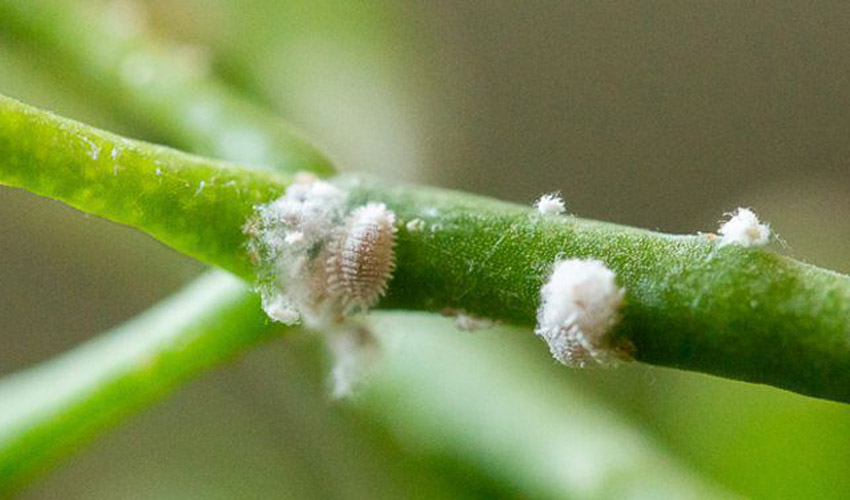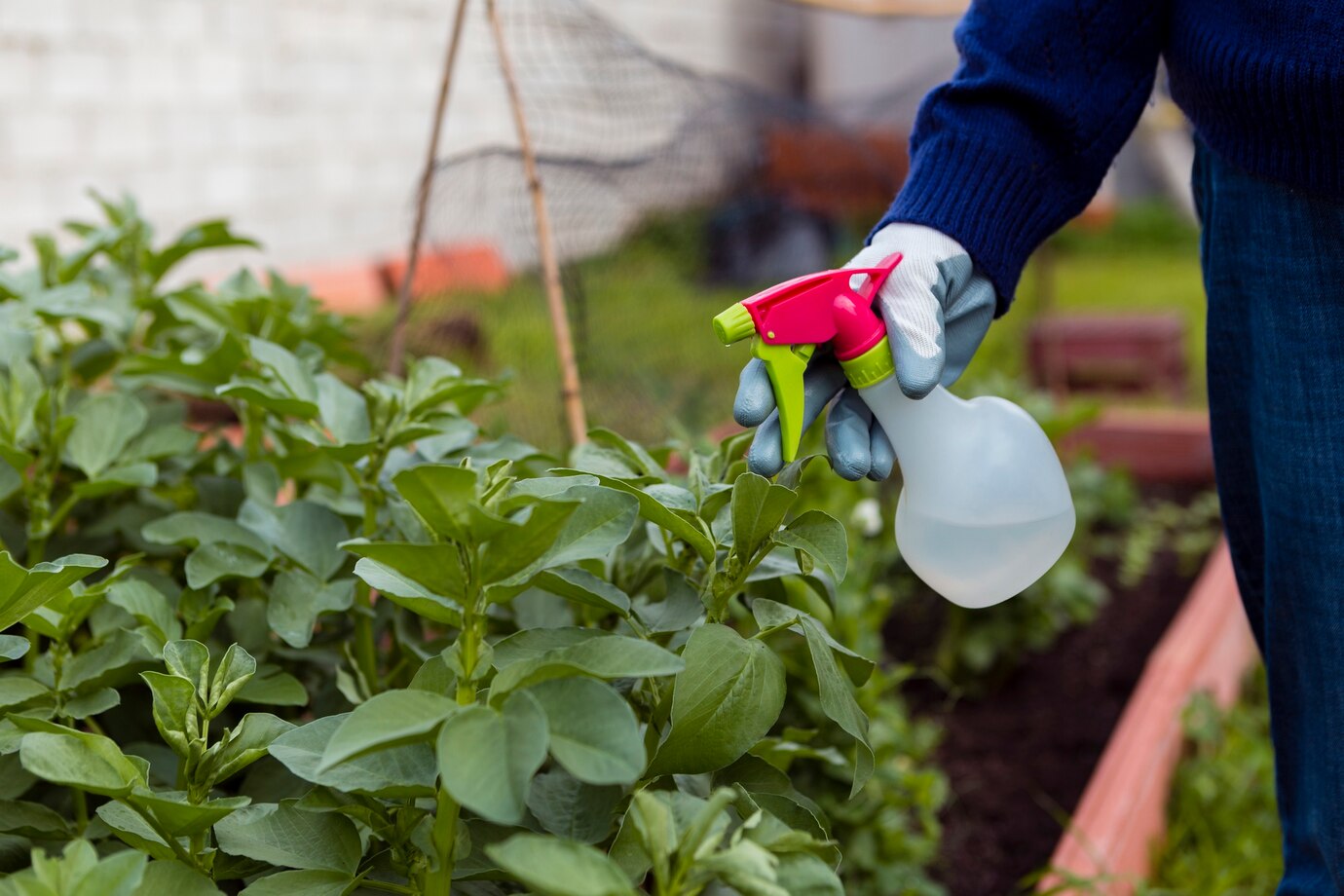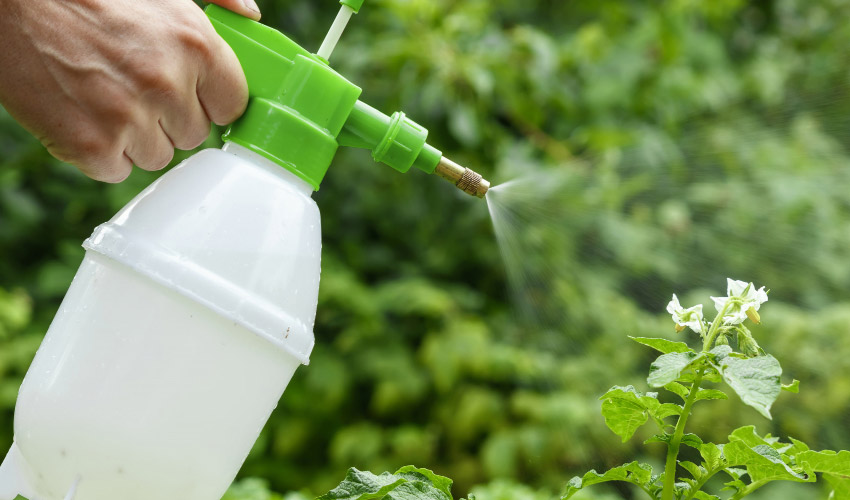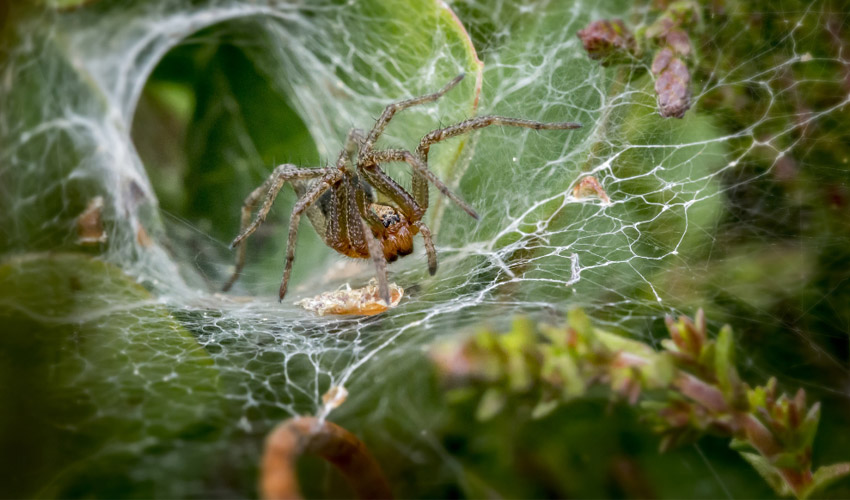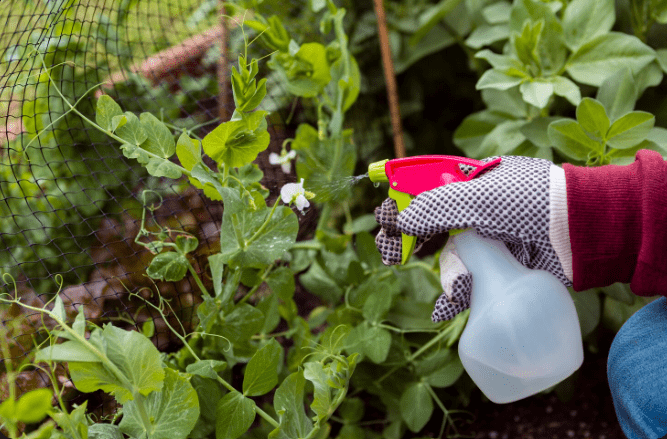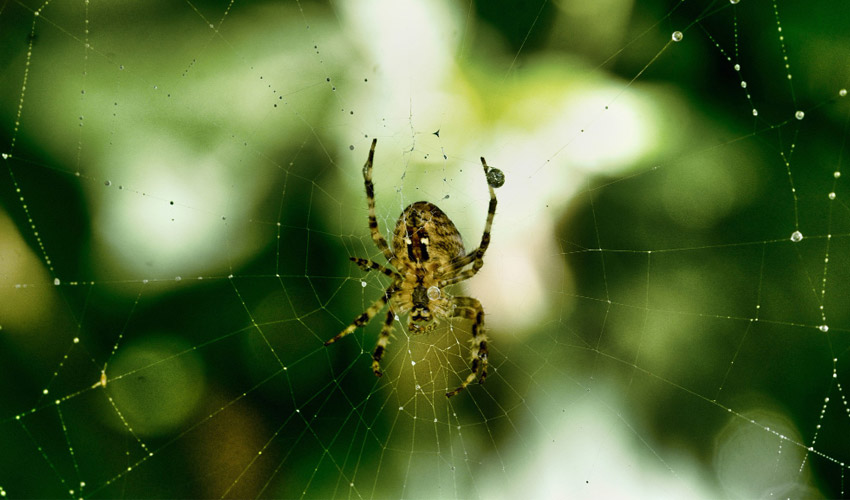If you’ve ever noticed tiny, unusual white insects on your plants, chances are you’ve come across mealybugs. These pests feed on plant sap and shield themselves with a waxy layer, which makes them difficult to remove. They don’t pose any risk to humans, but they can weaken and damage plants, so it’s best to deal with them quickly if you spot an infestation in your home or garden.
Table of Contents
ToggleWhat are Mealybugs?
Mealybugs belong to the family Pseudococcidae and are closely related to other sap-sucking insects such as aphids, scale insects, and whiteflies. Although different species exist, they share similar life cycles and feeding patterns.
These pests are small, soft-bodied insects that survive by sucking plant juices. Their name comes from their powdery, wax-coated bodies, which give them a mealy appearance. You’ll often find them clustering on stems, leaves, and even fruits, where they can cause noticeable damage to both indoor and outdoor plants.
Mealybugs usually thrive on soft-stemmed and succulent plants since these are easier for them to pierce and feed on. Some commonly affected plants include:
- Citrus trees – They attack the leaves and fruit, often reducing plant health and crop quality.
- Houseplants – Many popular indoor plants, such as pothos and philodendrons, are vulnerable.
- Ornamentals – Decorative plants like hibiscus, begonias, and fuchsias can also suffer infestations.
- Succulents – Cacti, aloe vera, and similar plants are among their favorites.
- Grapevines – Mealybugs damage leaves and fruits while also spreading harmful plant diseases.
It’s crucial to inspect plants regularly for early warning signs. Look for white, cotton-like clusters on leaves, stems, or fruits. Detecting them early makes it easier to control the infestation before it spreads and causes serious harm.
How to Identify Mealybugs?
Spotting mealybugs isn’t too difficult once you know what to look for. These pests are small, soft-bodied insects with a distinctive white, powdery coating that helps them stay protected and hold in moisture.
Some key features that make mealybugs easy to recognize include:
- Size – Most are about 1/8 to 1/4 inch long, though some species can be slightly smaller or larger.
- Color – They are usually white or pale gray, but particular species may appear with a faint pink or yellowish tint.
- Shape – Their bodies are oval and slightly flattened, with six legs and two noticeable antennae.
- Waxy coating – A fluffy, powder-like wax covers their bodies, often blending in with the plant surface and making them harder to spot.
- Honeydew secretion – They excrete a sticky, sweet liquid called honeydew, which can attract ants and sometimes lead to the growth of sooty mold.
Regular plant checks are essential. By catching mealybugs early, you can stop them from spreading and causing serious damage.
How to Get Rid of Mealybugs?
Mealybugs can be tough to manage, but you can get rid of mealybugs in small infestations through manual removal with alcohol or soapy water.
1. Manual Removal with Alcohol or Dish Soap
- Prepare a solution: Use rubbing alcohol or mix one teaspoon of dish soap in 1 quart of water.
- Check your plant: Look under the leaves, along the stems, and in the leaf joints.
- Apply directly: Dip a cotton swab or soft brush in the solution and dab it onto the pests.
- Clean off: Wipe away the dead mealybugs with a tissue or cloth.
- Repeat: Reapply every few days until the infestation is gone.
This method works best for light infestations.
2 – Wash Mealybugs Away
- Locate infestations – Check stems, leaf joints, and undersides of leaves.
- Spray with water – Use a firm stream of water to wash pests off the plant.
- Repeat as needed – Reapply every few days until the infestation clears.
This method is safe, inexpensive, and eco-friendly, but it’s less effective for heavy infestations or very large indoor plants.
3 – Use Insecticidal Soap
- Mix solution: Combine one tablespoon of mild soap with 1 quart of water.
- Spray thoroughly: Cover stems, undersides of leaves, and all infested spots.
- Let it work: The soap coats and suffocates mealybugs.
- Rinse plant: Wash off soap and dead pests after a few hours have passed.
- Repeat: Reapply every few days until the problem clears.
Test a small area first, as some plants may be sensitive to soap. Best for light infestations.
4. Apply Neem Oil
- Mix solution – Blend 1–2 tablespoons of neem oil with 1 quart of water and a small amount of mild soap.
- Shake well – Ensure the mixture is properly combined.
- Spray thoroughly – Cover leaves, stems, and hidden spots, especially leaf undersides.
- Repeat – Reapply every 7–14 days until mealybugs are gone.
Neem oil interferes with feeding and reproduction, gradually reducing infestations. Apply it to a small area first, as some plants may be sensitive to the solution. Avoid spraying blooming plants to protect pollinators.
5. Encourage Natural Predators
- Ladybugs – Feed on mealybugs; attract them with plants like marigolds, daisies, and yarrow.
- Lacewings – Effective predators; draw them in with dill, fennel, or coriander.
- Parasitic wasps – Lay eggs inside mealybugs; encourage them with alyssum, caraway, or yarrow.
- Predatory mites – Some species eat mealybugs and can be introduced from garden suppliers.
- Birds – Small birds like wrens, chickadees, and titmice feed on mealybugs. Provide feeders, baths, or houses to invite them.
Natural predators offer a sustainable, eco-friendly solution, though results may take time to show.
6 – Pruning
- Inspect the plant: Look for mealybug clusters, especially under leaves and at stem joints.
- Identify damage: Check for wilted or discolored leaves with white, cottony patches.
- Prune affected parts: Use clean, sharp shears to cut well beyond the infested area.
- Dispose properly: Remove and discard cut material to avoid spreading pests.
- Monitor closely: Keep checking the plant; repeat if needed or combine with other methods.
Pruning is best for severe infestations when other treatments aren’t enough. Use it carefully, as it can stress the plant.
7. Systemic Insecticides
- Select carefully: Use only products labeled for mealybugs and safe for your plant type.
- Apply correctly: Add to soil or spray foliage as directed so the plant absorbs it.
- Allow time: These insecticides act slowly but provide longer-lasting protection.
- Reapply as needed: Follow instructions for timing, usually every few weeks.
Use systemic insecticides with caution. They may harm beneficial insects and are not suitable for edible plants. Always follow safety guidelines.

